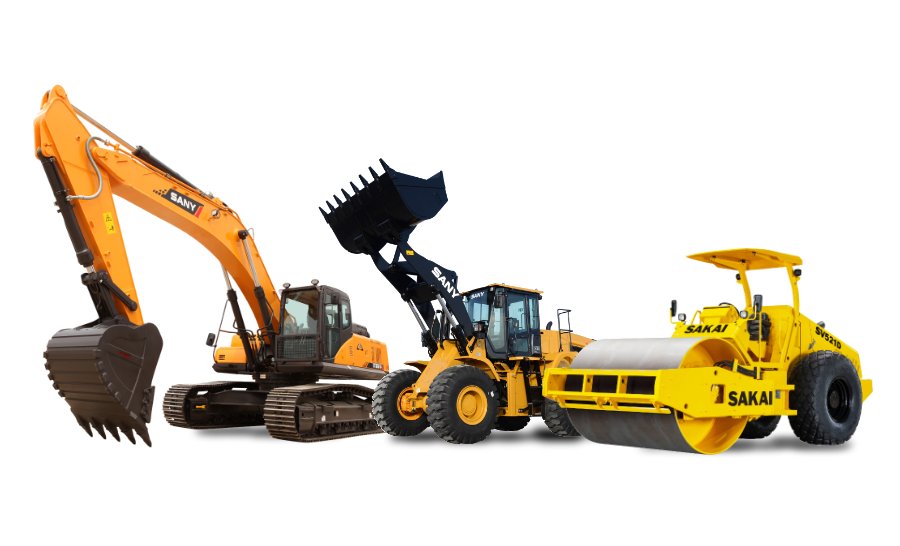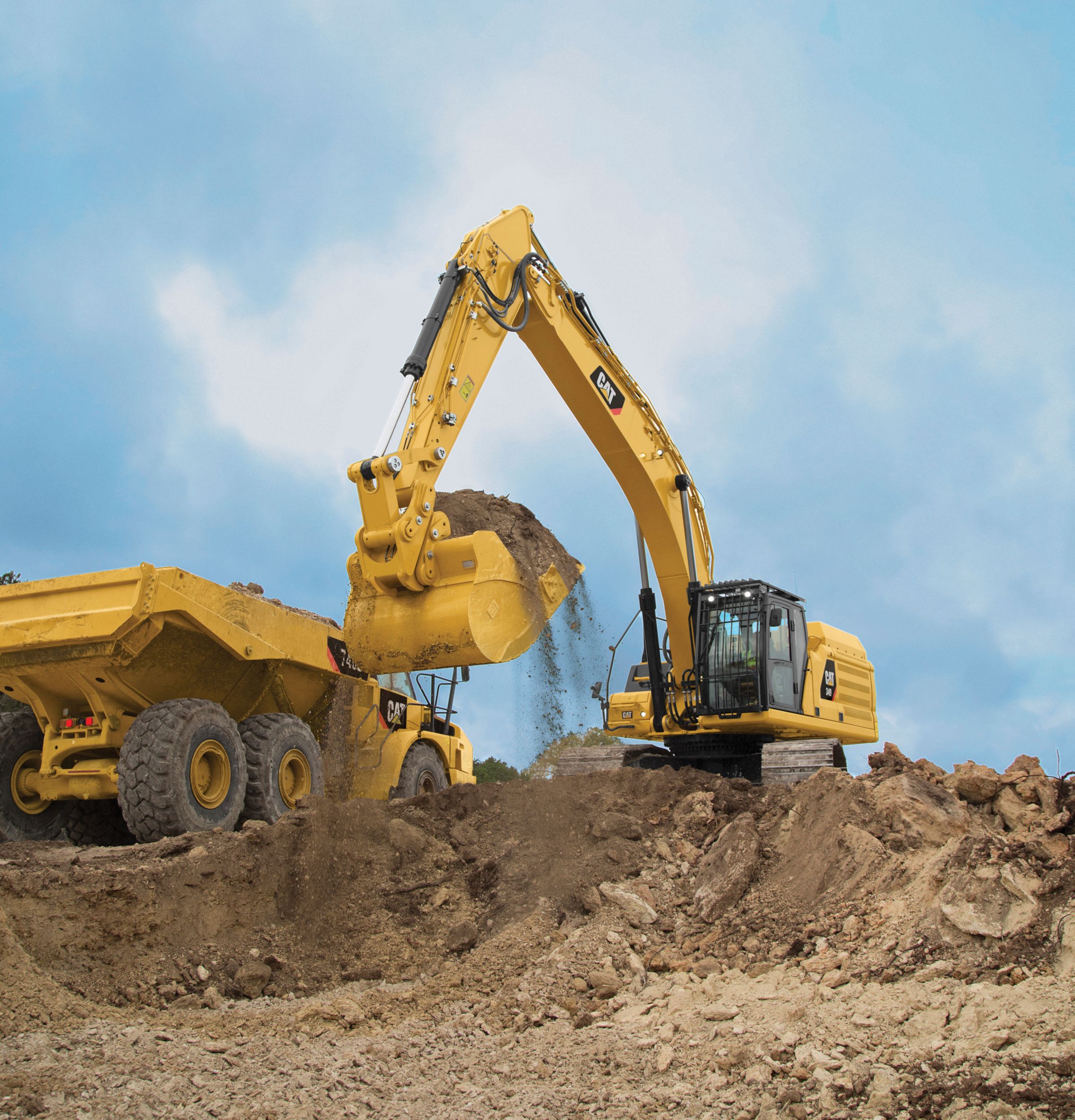Forklift Rental Services for Industrial and Commercial Use
Forklift Rental Services for Industrial and Commercial Use
Blog Article
A Comprehensive Guide to Heavy Tools Used in the Construction Market
In the world of building and construction, the application of hefty equipment stands as a keystone for efficiency and productivity. From looming cranes to earth-shaking excavators, each piece serves a crucial objective fit the physical landscape around us. Understanding the subtleties of these makers, their functions, and the strategic factors to consider behind their option can indicate the difference in between a project's success and failing. As we begin on this exploration of the detailed guide to heavy tools used in the building sector, we will explore the details that govern their procedure, maintenance, and the evolving landscape of technological advancements that remain to redefine the limits of building and construction capabilities.
Sorts Of Heavy Tools
Within the building industry, a varied variety of hefty equipment is made use of to efficiently lug out numerous jobs. Excavators are just one of the most typically used kinds of heavy tools. These versatile machines are equipped with an arm, bucket, and taxicab installed on a turning system, enabling digging and moving materials with accuracy. Bulldozers, with their broad tracks and enormous blade in the front, are necessary for jobs such as grading, clearing, and pushing heavy materials. Cranes play a crucial function in lifting and relocating heavy products on building and construction sites. Tower cranes are frequently utilized for tall structures, while mobile cranes are versatile and can be conveniently transported to various locations. Additionally, dispose trucks are vital for moving products such as sand, crushed rock, and particles around construction websites. Their ability to carry hefty loads makes them important for keeping a smooth process. Each kind of hefty tools plays an important function in ensuring that construction projects are completed effectively and efficiently.
Applications and functions
Among the essential elements in understanding the performance of heavy equipment within the building industry is examining their specific functions and applications. These makers are designed to perform a variety of tasks that are vital for building tasks of all sizes. Excavators, as an example, are frequently used for excavating holes, trenches, and foundations, while bulldozers master clearing up and grading land. Cranes are important for lifting and relocating hefty products on building sites, and dump vehicles are crucial for transporting products like dirt, crushed rock, and sand. Furthermore, loaders are functional machines that can take care of jobs such as product grading, handling, and excavation.
The applications of heavy tools prolong past conventional building and construction tasks. As an example, compact track loaders are ideal for operating in harsh surfaces, making them suitable for landscaping and agricultural projects. Skid steer loaders are commonly used for tasks requiring maneuverability in tight spaces, such as indoor building or demolition jobs. Comprehending the features and applications of hefty tools is vital for using these equipments effectively in different building circumstances.
Factors To Consider for Tools Selection
When choosing heavy equipment for building tasks, careful consideration of numerous aspects is essential to make sure ideal efficiency and effectiveness. The first factor to consider is the certain requirements of the project. Understanding the scope, size, and intricacy of the building task will assist establish the kind and size of devices needed. Secondly, the terrain and environment where the devices will be made use of should be taken into consideration. Devices matched for rough surfaces might differ from those required for urban setups. Expense is another crucial element. Balancing the first purchase price with maintenance and operating prices over the tools's life-span is crucial. In addition, the accessibility of extra parts and company must be thought about to reduce downtime. Security features, operator training needs, and compliance with regulations are non-negotiable elements that impact tools option. Lastly, evaluating the reputation and reliability of tools producers can aid guarantee longevity and performance. By meticulously considering these considerations, construction companies can choose the ideal heavy equipment for their jobs, bring about successful results.
Maintenance and Safety Practices
Implementing strict maintenance and safety and security methods is vital in the building and construction sector to guarantee the long life of hefty equipment heavy equipment rental and the security of employees. Proper training for devices drivers is important to lessen the threat of accidents.
This includes the use of personal safety tools, such as tough hats, handwear covers, and steel-toed boots. It is critical to perform comprehensive pre-operational checks before using any type of devices to verify that it is in good working condition.

Emerging Patterns in Building And Construction Devices
To remain in advance in the construction market and adapt to advancing demands, companies are progressively transforming in the direction of incorporating sophisticated innovations and technologies in their hefty devices, showing the arising trends in building tools. One popular trend is the assimilation of telematics systems in building machinery. These systems enable real-time tracking of equipment performance, location tracking, and even anticipating upkeep, boosting operational effectiveness and reducing downtime.
An additional considerable trend is the surge of autonomous building and construction equipment. From self-driving dump vehicles to automated excavators, these equipments are reinventing building sites by boosting security, accuracy, and productivity. Furthermore, the use of drones for checking, mapping, and progress monitoring is becoming more widespread, offering beneficial understandings and improving operations.
Furthermore, the construction sector is progressively exploring the use of 3D printing technology to develop elements and also entire frameworks on-site, conserving time and expenses while making it possible for higher layout adaptability. As technology remains to development, these emerging patterns are poised to form the future of building and construction devices, driving development and performance throughout the market.
Conclusion
In final thought, hefty tools plays a vital role in the construction sector by providing the necessary power and effectiveness to complete various jobs - aerial lift rental. Recognizing the various kinds of tools, their features, and applications is necessary for picking the appropriate tools for the task.

Applying stringent maintenance and safety and security practices is vital in the building and construction industry to make sure the longevity of heavy tools and the protection of employees.To stay ahead in the building sector and adjust to developing needs, firms are increasingly turning towards including sophisticated innovations and innovations in their hefty devices, mirroring the arising trends in building tools.In conclusion, hefty equipment plays an essential function in the construction market by offering the required power and effectiveness to finish numerous tasks. Comprehending the different kinds of tools, their features, and applications is necessary for choosing the ideal devices for the job.
Report this page